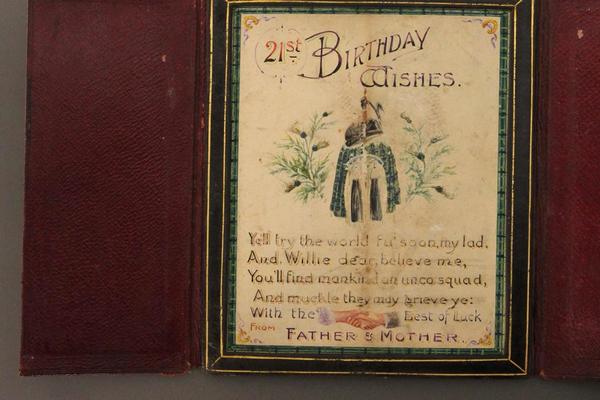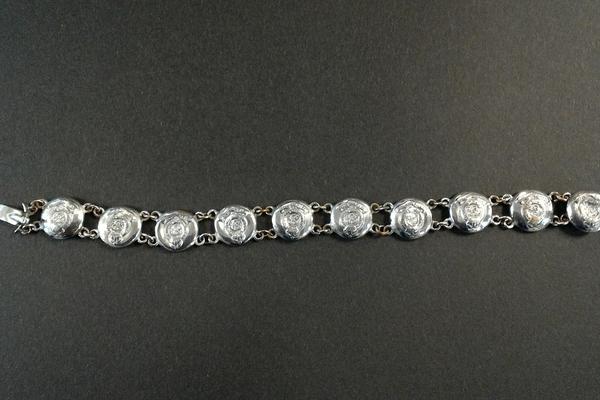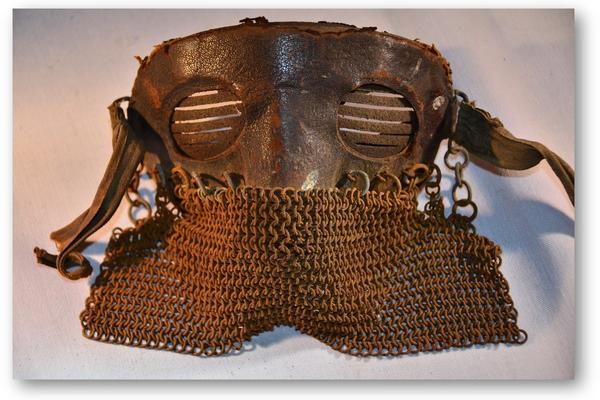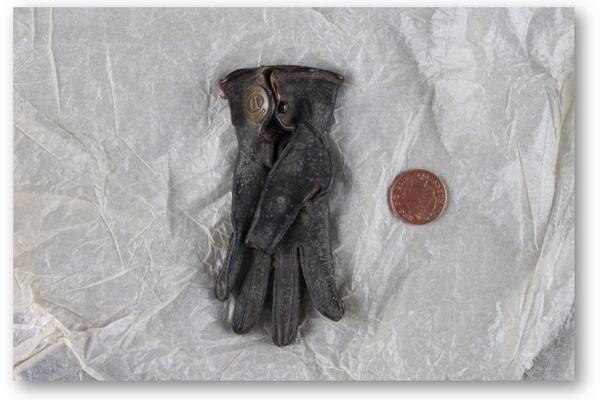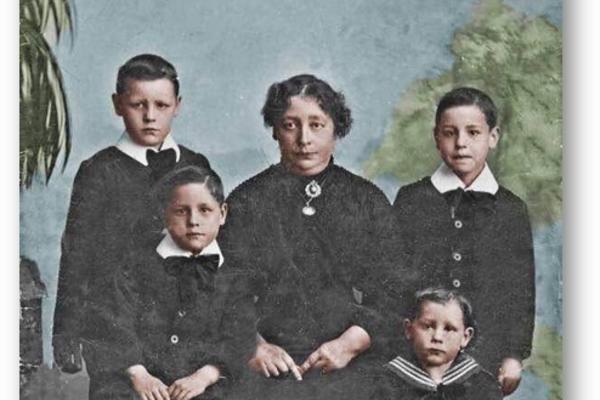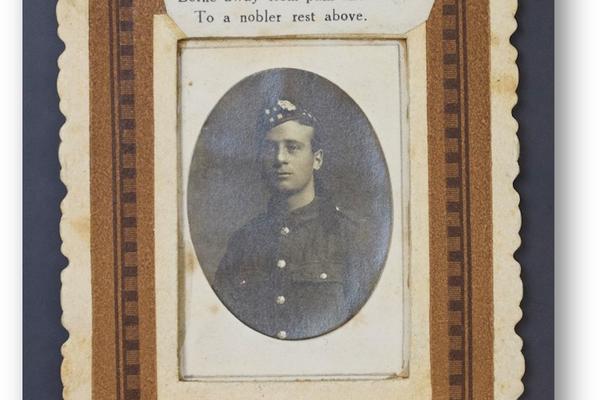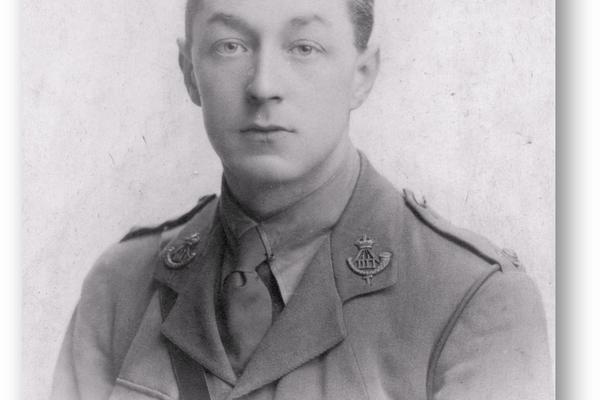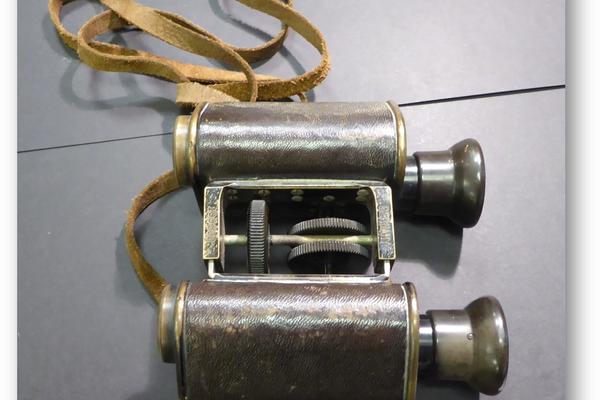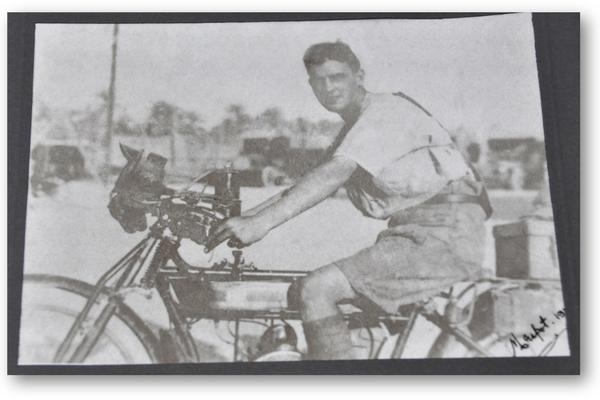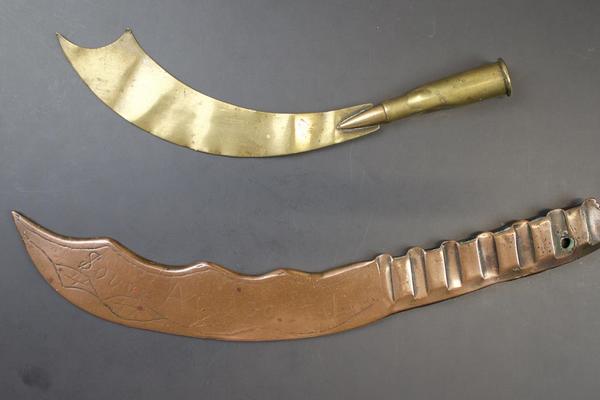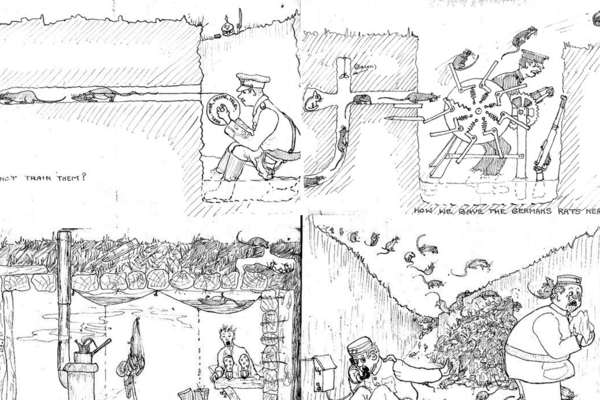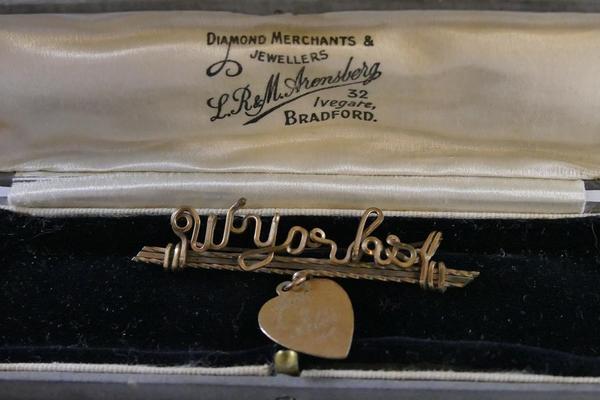Home
'Highly Commended', 2019 Vice-Chancellor’s Public Engagement with Research Awards

COMMUNITY COLLECTION DAYS
ONLINE ARCHIVE
Leather-bound birthday card sent to Thomas 'Will' Eaton on his 21st birthday. The leather work was made by Wills' father, a bookbinder.
Leather-bound birthday card sent to Thomas 'Will' Eaton on his 21st birthday. The leather work was made by Wills' father, a bookbinder.
Private William Ernest Stephens, Worcestershire Yeomanry, served in Egypt and brought back many photographs and postcards.
Private William Ernest Stephens, Worcestershire Yeomanry, served in Egypt and brought back many photographs and postcards.
Diary of Lily Jane Hawkins, Lady’s Maid to Lady Mary Herbert, wife of Colonel The Honourable Aubrey Herbert.
Diary of Lily Jane Hawkins, Lady’s Maid to Lady Mary Herbert, wife of Colonel The Honourable Aubrey Herbert.
A bracelet made of uniform buttons that Private Albert Stokes (Royal Engineers) made for his wife, Beatrice.
A bracelet made of uniform buttons that Private Albert Stokes (Royal Engineers) made for his wife, Beatrice.
A tank mask brought back from France by Bill Whitfield of the Tank Corps
A tank mask brought back from France by Bill Whitfield of the Tank Corps
“Grandpa was very lucky that he got out there right at the beginning!”
“Grandpa was very lucky that he got out there right at the beginning!”
Cyril Green's glove shrunk when it was exposed to nerve gas. The glove was recovered from the battlefield.
Cyril Green's glove shrunk when it was exposed to nerve gas. The glove was recovered from the battlefield.
“There were no medals for Emily but she was a truly wonderful, remarkable, uneducated but lovely lady.”
“There were no medals for Emily but she was a truly wonderful, remarkable, uneducated but lovely lady.”
Pocket watch belonging to Pte Sidney Crook of the 5th Battalion Canadian Infantry
Pocket watch belonging to Pte Sidney Crook of the 5th Battalion Canadian Infantry
“As my grandmother could not afford to visit his grave in France, I was the first family member to visit.”
“As my grandmother could not afford to visit his grave in France, I was the first family member to visit.”
Sacrifice pendant of Mary Black McGilvray McLennan, whose son, William, died in France in July 1916.
Sacrifice pendant of Mary Black McGilvray McLennan, whose son, William, died in France in July 1916.
“Most years, around Remembrance Day, my father and I would check his medals and try out the whistle, always unsuccessfully.”
“Most years, around Remembrance Day, my father and I would check his medals and try out the whistle, always unsuccessfully.”
A set of German binoculars brought back by Colin Scott Mackenzie of the Ross Mountain Battery, 4th Highland Mountain Brigade.
A set of German binoculars brought back by Colin Scott Mackenzie of the Ross Mountain Battery, 4th Highland Mountain Brigade.
“He kept very precise diaries but never mentioned any family memories or feelings.”
“He kept very precise diaries but never mentioned any family memories or feelings.”
“These were likely purchased during the war. They belonged to my grandfather, James Sellwood, who served as a soldier.”
“These were likely purchased during the war. They belonged to my grandfather, James Sellwood, who served as a soldier.”
Captain Arthur Henry Douglas left a photo album of his time in the army during the war.
Captain Arthur Henry Douglas left a photo album of his time in the army during the war.
Brooch sent to Nellie Foster from Jack Speight while serving in France. Jack was killed during the war and Nellie never married.
Brooch sent to Nellie Foster from Jack Speight while serving in France. Jack was killed during the war and Nellie never married.
Leather-bound birthday card sent to Thomas 'Will' Eaton on his 21st birthday. The leather work was made by Wills' father, a bookbinder.
Leather-bound birthday card sent to Thomas 'Will' Eaton on his 21st birthday. The leather work was made by Wills' father, a bookbinder.
Private William Ernest Stephens, Worcestershire Yeomanry, served in Egypt and brought back many photographs and postcards.
Private William Ernest Stephens, Worcestershire Yeomanry, served in Egypt and brought back many photographs and postcards.
Diary of Lily Jane Hawkins, Lady’s Maid to Lady Mary Herbert, wife of Colonel The Honourable Aubrey Herbert.
Diary of Lily Jane Hawkins, Lady’s Maid to Lady Mary Herbert, wife of Colonel The Honourable Aubrey Herbert.
A bracelet made of uniform buttons that Private Albert Stokes (Royal Engineers) made for his wife, Beatrice.
A bracelet made of uniform buttons that Private Albert Stokes (Royal Engineers) made for his wife, Beatrice.
A tank mask brought back from France by Bill Whitfield of the Tank Corps
A tank mask brought back from France by Bill Whitfield of the Tank Corps
“Grandpa was very lucky that he got out there right at the beginning!”
“Grandpa was very lucky that he got out there right at the beginning!”
Cyril Green's glove shrunk when it was exposed to nerve gas. The glove was recovered from the battlefield.
Cyril Green's glove shrunk when it was exposed to nerve gas. The glove was recovered from the battlefield.
“There were no medals for Emily but she was a truly wonderful, remarkable, uneducated but lovely lady.”






